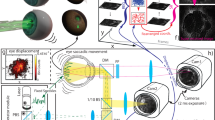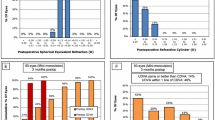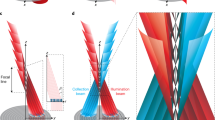Abstract
RETINAL images made up of equally spaced parallel vertical lines can readily be fused at disparities differing by a multiple of the line spacing, so giving rise to illusions of depth. In steady light, however, a figure of this kind is normally seen as a single surface, even when tilted away from the frontal plane so that the image lines on one retina intersect the corresponding loci to those on the other retina at several different disparities (Fig. 1).
This is a preview of subscription content, access via your institution
Access options
Subscribe to this journal
Receive 51 print issues and online access
$199.00 per year
only $3.90 per issue
Buy this article
- Purchase on SpringerLink
- Instant access to full article PDF
Prices may be subject to local taxes which are calculated during checkout
Similar content being viewed by others
References
Barlow, H. B., Blakemore, C., and Pettigrew, J. D., J. Physiol., 193, 327 (1967).
Nikara, T., Bishop, P. O., and Pettigrew, J. D., Exp. Brain Res., 6, 353 (1968).
Author information
Authors and Affiliations
Rights and permissions
About this article
Cite this article
MACKAY, D. Fragmentation of Binocular Fusion in Stroboscopic Illumination. Nature 227, 518 (1970). https://doi.org/10.1038/227518a0
Received:
Issue date:
DOI: https://doi.org/10.1038/227518a0
This article is cited by
-
A neurophysiological model for anomalous correspondence based on mechanisms of sensory fusion
Documenta Ophthalmologica (1981)



